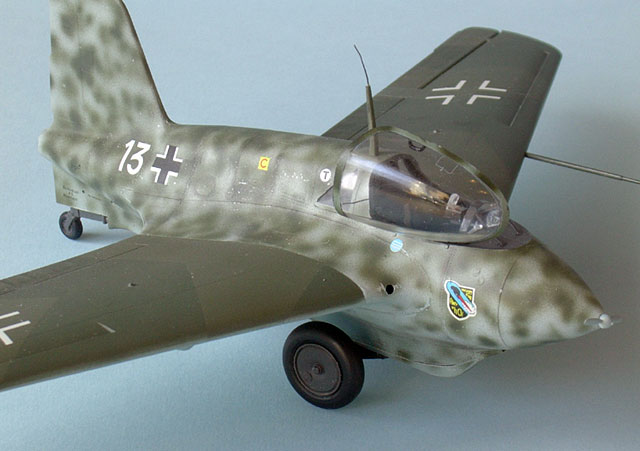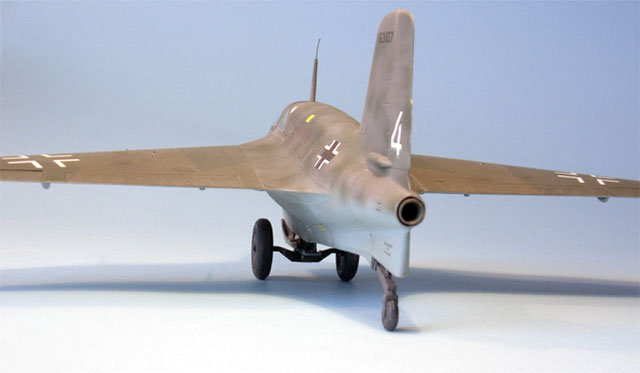|
2 x Hasegawa's 1/32 scale
Messerschmitt Me
163 B-1a
by
Roland Sachsenhofer
|
 |
|
Messerschmitt Me 163 B-1a |

HyperScale is proudly supported by Squadron.com
The Messerschmitt Me163 “Komet” is one of the better known, and
actually realised, concept out of a huge list of ideas born by the
German aircraft industry, that was promised to win a lost war. It seems
as if the Komet would be an ideal sample for the so called “wonder
weapons” of the last month of the war.
In fact, the history of the Me163 reaches back as far as the 1920s
with the initial concept of the flying wing, which found its main
promoter in the person of Dr. Lippisch and the conception of rocket
powered aircraft where both controversially discussed matters in the
years after the First World War. The RLM initiated research and
development of a rocket powered flying wing- interceptor in the early
40´s, but soon seemed to lose interest. The project was managed by
Lippisch, who had left the DFS (Deutsche Forschungsanstalt für Segelflug)
to work at “Abteilung L” by Willy Messerschmitt at Augsburg.

Things changed in the last year of the war: In a desperate attempt to
break the overwhelming allied air supremacy the Me-163 B –actually a
half-baked experimental aircraft- was mass produced and deployed: the
first unit being equipped with the Komet was I./ JG 400 in Brandis/
Leibzig by summer of 1944. The Me-163 proved to be extremely dangerous-
not for the allied bombers; just 10 kills of enemy aircraft are
documented- but for the courageous pilots flying these rocket powered
sailplanes.
The Hasegawa kit is not a new one, which is quite obvious: the panel
lines are raised, the level of detail is -to say- mediocre.
On the other hand: the build is a quick one, fit and accuracy of the
parts are convincing.
The kit offers the option to show the rocket by separating the tail
section; in this case a good portion of detailing will be necessary.

The Komets where build out of the box -with two exceptions: the upper
part of the radio mast is quite too thick, so I cut it of, drilled a
0.3mm hole and attached a piece of copper wire. This comes close to the
sleek lines of the original.
As a second change I used Eduard seat belts and some scratch build
parts to detail the cockpit areas.
As usual I used Gunze colours (RLM 65, RLM 76, 81 and 83 on “White
13”; RLM 65 and RLM 75 /RLM 83 on “White 4”) the sparse weathering was
done mainly by aquarelle colours. “White 14” was primed with Tamiya Flat
Aluminium, after colouring I used adhesive band –and some gentle
scratching- to show attrition and wastage.
“White 4” –a craft offered by the kit- as “White 14” where used by JG
400 in 1944.
Click the thumbnails below to view larger images:
Model, Images and Text Copyright ©
2006 by Roland
Sachsenhofer
Page Created 28 August, 2006
Last Updated
28 August, 2006
Back to
HyperScale Main Page |
Home
| What's New |
Features |
Gallery |
Reviews |
Reference |
Forum |
Search